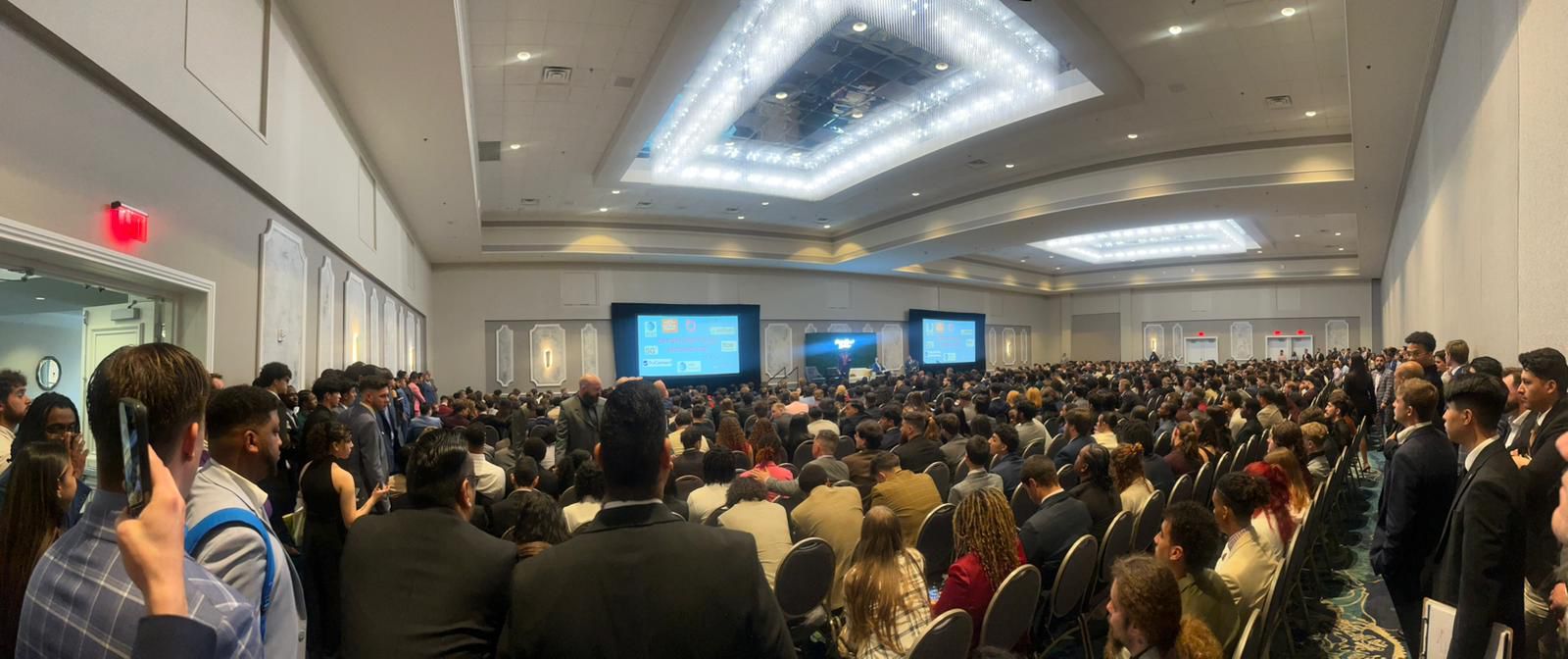- Author: Pinakle Inc.
- Categories: Customer Engagement

First impressions are everything in sales, and every initial interaction with a prospect can make or break your deal. While most salespeople focus on perfecting their pitch or memorizing product features, there’s one powerful technique that separates the pros from the amateurs, and it’s hiding in plain sight.
It’s called client mirroring.
Client mirroring is the subtle art of reflecting your prospect’s body language, tone of voice, speaking pace, and energy level to create an instant sense of comfort and connection. When done right, mirroring in sales builds instant rapport, makes interactions more natural, and increases the likelihood of meaningful conversations.
Read below as we explore client mirroring, why it’s so effective, and how to use it in your next prospect meeting.
What Is Client Mirroring?
Client mirroring is a customer engagement technique where sales representatives mimic a prospect’s verbal and nonverbal cues. It’s based on the principle that people naturally feel more comfortable around others who seem similar to them.
By aligning with your client’s behavior, you reduce resistance and encourage openness.
Of course, this doesn’t mean copying someone outright. It just means matching their tone, posture, pace, and even vocabulary in a way that feels authentic and respectful.
Why Client Mirroring Works
Humans are hardwired for connection through a fascinating neurological phenomenon called mirror neurons. These specialized brain cells fire when we perform an action and observe someone else performing the same action.
Mirror neurons help explain why we unconsciously mimic other people’s postures, expressions, and mannerisms, and why we feel more comfortable around people who mirror us back.
When you subtly match a prospect’s behavior, you activate their mirror neuron system, creating an unconscious sense of familiarity and trust. Their brain essentially thinks, “This person is like me,” which triggers positive feelings and openness. This neurological response happens within seconds and operates below the level of conscious awareness, making mirroring one of the most powerful tools for building instant rapport in sales.
Mirroring in sales can help you:
- Create a comfortable atmosphere – When prospects feel like you’re on the same wavelength, their natural defensiveness drops and they become more open to conversation.
- Build rapport more quickly – Instead of spending 15 or 20 minutes establishing trust through small talk, mirroring can create that connection within the first few minutes of interaction.
- Increase receptivity to your message – Prospects who feel aligned with you are significantly more likely to listen actively to your presentation rather than mentally preparing objections.
Verbal Mirroring
One of the most accessible and effective ways to start practicing sales mirroring is through verbal cues. It requires no special training and can be implemented in your next conversation.
The only key is to carefully listen to how your prospects speak and match their:
Pace
Are they fast and energetic or more measured and thoughtful? If you speak at double their speed, you might come across as pushy and overwhelming. On the other hand, if you talk too slowly to an energetic prospect, you might seem disengaged or unprepared to keep up with their decision-making pace.
Matching their rhythm makes them feel heard and understood.
Tone
Do they speak formally or casually? Match their style while staying true to your professionalism. A prospect using casual language like “Hey, no worries” will feel more comfortable with “Sure thing” than “Certainly, I understand completely.”
Word Choice
Mirror common words or phrases they use to show alignment. When a prospect says “investment” instead of “cost,” or “team” instead of “employees,” adopting their terminology signals that you speak their language and understand their perspective.
Pro-Tip: Don’t overdo it. Subtle adjustments are more effective and come across as natural. Forced mimicry can break trust rather than build it.
Non-Verbal Mirroring
Your body language can say just as much as your words, sometimes even more. Always remember that people form impressions and make judgments based on what they see before they even process what you’re saying. Subtly aligning your posture, gestures, and facial expressions can help you make an impact and build subconscious trust.
Watch for cues like:
Posture
If your prospect is leaning in, you can do the same to signal engagement. When they sit back in a relaxed position, follow suit to show you’re comfortable and not trying to pressure them.
However, avoid obvious copying. Wait a few seconds before adjusting your posture to make it feel natural. The goal is to create subconscious alignment, not to make your prospect feel like they’re looking in a mirror.
Gestures
Use open hand gestures or mirror how they use their hands when speaking. If they’re animated with broad gestures, bring some energy to your own hand movements, but if they keep their hands mostly still, tone down your actions accordingly. The key is matching their level of expressiveness without looking like you’re playing charades.
Facial Expression
Match the level of intensity or calmness in their expression. A serious, focused prospect will respond better to a thoughtful, attentive expression than a big smile, while an enthusiastic prospect will appreciate seeing that energy reflected back. Remember that your face should feel authentic to the moment. Forced expressions are easily detected and can damage trust.
Pro-Tip: Always keep it subtle. Mirroring should feel like a natural rhythm, not an act.
Stay Ethical and Don’t Manipulate
Effective sales mirroring is rooted in empathy and authenticity, not manipulation. It’s about making your prospect feel seen and heard, not tricking them into saying yes.
To keep your approach ethical:
- Always lead with curiosity and a genuine desire to help – When your intention is authentic, mirroring becomes a natural extension of wanting to connect rather than a manipulative technique to close a deal.
- Don’t mimic every move, be yourself while staying aware of their cues – Effective mirroring should feel like a subtle dance, not a game of follow-the-leader that makes your prospect feel uncomfortable or mocked.
- Remember that trust is built over time, not forced through tactics – Mirroring is simply one tool that can accelerate the natural process of building rapport, but it can’t replace genuine competence, integrity, and follow-through in your sales approach.
Practice Makes Progress
Like any skill, mirroring in sales improves with repetition and reflection. Start by:
- Recording and reviewing your sales calls – Listen for verbal cues you missed during the live conversation, such as hesitation patterns or emphasis on certain words, and you can mirror more effectively next time.
- Noting how your energy and tone match your prospect’s – Create a simple rating system (1-10) to score your mirroring effectiveness after each call. Doing so will help you identify patterns and track improvement over time.
- Asking mentors for feedback on your communication style – Request that they observe you during practice sessions or shadow calls, since it’s nearly impossible to monitor your own mirroring while simultaneously focusing on the sales conversation.
With time, client mirroring becomes second nature, and your conversations will feel more like collaboration than persuasion.
Final Thoughts: Lead with Empathy, Build with Trust
Client mirroring is more than a psychological trick. It’s a tool that will help you connect on a deeper level. When used thoughtfully, it can transform cold outreach into warm conversations and build a foundation of trust that fuels success.
Quick Recap:
- Client mirroring is a subtle but powerful way to build instant rapport by aligning your communication style with your prospect’s behavior.
- Verbal mirroring, like matching tone, pace, and word choice, makes prospects feel understood and opens the door to honest conversation.
- Non-verbal cues like posture, gestures, and facial expressions play a crucial role in creating subconscious alignment and trust.
- Authenticity is key! Mirroring works best when it’s natural, respectful, and rooted in empathy, not manipulation.
- Like any skill, mirroring improves with practice. Review your calls, ask for feedback, and refine your approach consistently.
Ready to elevate your sales skills?
At Pinakle, we help aspiring professionals build the confidence and skills they need to master techniques like sales mirroring and beyond. If you’re looking for more sales training insights or career opportunities, explore our resources and connect with us today.


